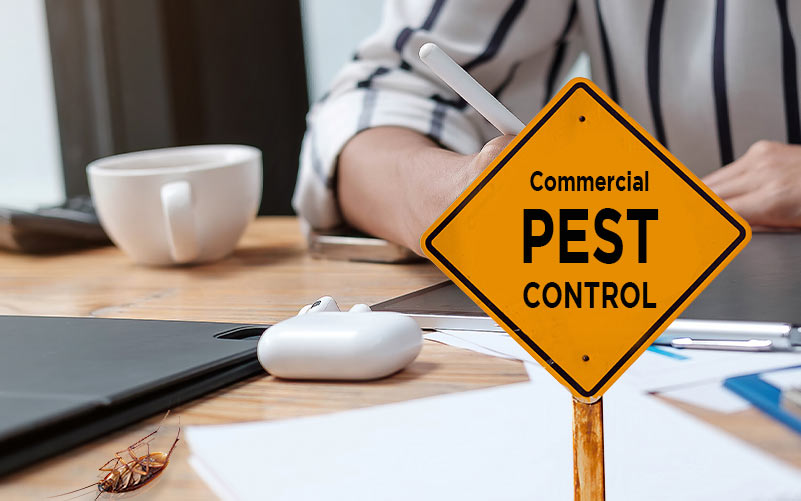Top Quality A1 Pest Control Services Charlotte - Safeguard Your Home
Bed Bug Treatment Breakdown: Contrasting Chemical Vs. Non-Chemical Solutions
In the world of pest control, especially when handling the relentless concern of bed insects, the option in between chemical and non-chemical therapy services can be an essential one. Both methods provide unique advantages and drawbacks, influencing variables such as efficiency, safety considerations, and general price. By analyzing the nuanced information of each approach, a clearer understanding of which course to seek in addressing a bed insect infestation can be achieved.
Effectiveness of Chemical Treatments
Chemical therapies for bed bug infestations have been extensively identified for their potent and rapid efficacy in removing these bugs. When considering the efficiency of chemical treatments, it is vital to recognize that they can offer a extensive and quick service to a bed bug problem. Professional pest control specialists commonly depend on pesticides to target bed insects at different phases of their life process, including eggs, adults, and fairies. These chemicals generally function by interfering with the bed pests' nerve system, resulting in paralysis and ultimate fatality.
Furthermore, chemical treatments have the advantage of offering residual results, indicating that they can remain to get rid of bed bugs also after the initial application. This recurring action is specifically beneficial in combating any prospective re-infestations. Furthermore, the fast activity of chemical treatments can bring alleviation to individuals encountering serious bed bug invasions, enabling them to regain control of their home swiftly.
Safety And Security Concerns With Chemical Solutions
One important aspect that requires cautious factor to consider when making use of chemical solutions for bed pest therapy is guaranteeing the safety of passengers and the atmosphere. Direct exposure to specific chemicals used in bed pest treatments can lead to respiratory concerns, skin irritation, or other adverse responses, particularly in individuals with pre-existing problems or sensitivities.
Additionally, the environmental effect of chemical solutions is an additional substantial factor to consider. Some pesticides used in bed pest treatments might be hazardous to valuable insects, wildlife, and ecosystems if they leach right into the soil or water systems. It is important to utilize chemical treatments sensibly, adhering to security standards, and considering much less toxic choices to minimize these dangers and make sure the risk-free and efficient monitoring of bed insect invasions.
Advantages of Non-Chemical Approaches
Considering the potential safety and security problems and ecological you can look here impact connected with chemical options for bed bug therapy, discovering non-chemical methods provides a promising choice with a number of unique advantages. Non-chemical therapies are ecologically friendly, as they do not add to air or water contamination, making them a sustainable choice for bug control.
Furthermore, non-chemical options can be effective in targeting bed insects, consisting of hard-to-reach locations where chemical therapies may not permeate - A1 bed bug exterminator charlotte. Techniques such as heat treatment, vacuuming, heavy steam cleansing, and cushion coverings offer thorough elimination without the usage of unsafe chemicals.
Limitations of Non-Chemical Treatments

In addition, non-chemical treatments usually require numerous applications to achieve effective elimination. This can be time-consuming and may not constantly guarantee complete elimination of all bed pests and their eggs, especially in hard-to-reach or hidden areas.
Furthermore, the success of non-chemical therapies heavily counts on appropriate execution and thoroughness, which can be challenging for individuals without expert knowledge. Insufficient application of non-chemical approaches may lead to insufficient eradication, resulting in consistent invasions and the demand for additional treatments.
For that reason, while non-chemical treatments have their advantages, it is vital to acknowledge these limitations and consider them when figuring out one of the most reliable technique for managing bed bug infestations.
Expense Comparison: Chemical Vs. Non-Chemical Options
Provided the limitations associated with non-chemical therapies, a necessary facet to review in the context of bed pest administration is the cost contrast between chemical and non-chemical choices. In comparison, non-chemical treatments like warm therapy or heavy steam can be more pricey, with costs varying from $1,000 to $6,000 for a whole home. While the first expense of chemical treatments may seem reduced, multiple therapies might be needed to completely remove the invasion, potentially enhancing the total price.
Verdict

Considering the possible security issues and ecological influence connected with chemical cockroach pest control remedies for bed pest treatment, exploring non-chemical techniques offers a promising alternative with numerous distinctive benefits.Provided the constraints associated with non-chemical treatments, an essential element to review in the context of bed bug administration is the price comparison between chemical and non-chemical options. In contrast, non-chemical treatments like warm therapy or vapor can be more expensive, with expenses varying from $1,000 to $6,000 for a whole home. While the initial expense of chemical treatments might seem reduced, numerous treatments might be called for to completely eliminate the invasion, possibly raising the general expense.In final thought, when contrasting chemical and non-chemical bed insect treatment alternatives, it is important to consider performance, security, benefits, limitations, and expense.